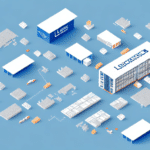Maximizing Efficiency with Drive Delivery
Drive delivery is a crucial aspect of businesses that rely on transportation to move goods from one place to another. Optimizing this process can lead to reduced costs, faster delivery times, and streamlined workflows. This article explores comprehensive strategies to enhance drive delivery efficiency, supported by data-driven insights and industry best practices.
Understanding Drive Delivery
Drive delivery involves transporting goods using vehicles such as trucks, vans, or bikes from warehouses or distribution centers to final destinations. It is a vital component of the supply chain, ensuring timely and cost-effective delivery of products to customers.
Key Components of Drive Delivery
- Transportation Modes: Selection between trucks, vans, bikes, or drones based on delivery requirements.
- Route Optimization: Utilizing software to determine the most efficient delivery routes.
- Real-Time Tracking: Implementing GPS systems to monitor deliveries in real-time.
Technological Advancements
Recent advancements such as GPS tracking systems and route optimization software have revolutionized drive delivery. These technologies enable businesses to enhance delivery accuracy, reduce fuel consumption, and improve overall efficiency.
The Importance of Efficiency in Drive Delivery
Maximizing efficiency in drive delivery is essential for reducing operational costs, increasing productivity, and enhancing customer satisfaction. Efficient delivery processes lead to timely arrivals, minimal delays, and improved reliability, which are critical factors in maintaining competitive advantage.
Cost Reduction
Optimized drive delivery minimizes fuel usage, reduces vehicle maintenance costs, and lowers labor expenses. According to the Bureau of Labor Statistics, transportation accounts for a significant portion of operational costs in many businesses, making efficiency improvements financially impactful.
Enhanced Customer Satisfaction
Customers expect prompt and reliable delivery services. Efficient drive delivery ensures that products reach customers on time, leading to higher satisfaction rates and increased likelihood of repeat business.
Factors Influencing Drive Delivery Efficiency
Several factors impact the efficiency of drive delivery operations. Understanding and managing these factors is crucial for optimizing delivery performance.
Transportation Mode Selection
The choice of transportation mode significantly affects delivery speed, cost, and environmental impact. For instance, electric vehicles can reduce fuel costs and emissions, aligning with sustainability goals.
Driver Expertise
Skilled drivers can navigate routes more effectively, handle vehicles responsibly, and ensure timely deliveries. Investing in driver training programs can enhance overall delivery efficiency.
Vehicle Maintenance
Regular maintenance of delivery vehicles prevents breakdowns and ensures they operate at peak efficiency. A well-maintained fleet reduces unexpected delays and extends vehicle lifespan.
External Factors
Elements such as traffic congestion, weather conditions, and road infrastructure can influence delivery times. Utilizing predictive analytics can help anticipate and mitigate the impact of these factors.
Streamlining Workflow with Technology
Integrating advanced technologies into drive delivery processes can streamline workflows, reduce manual errors, and enhance overall efficiency.
Automation Tools
Automation in order processing, inventory management, and shipping reduces the time and effort required for manual tasks. Tools like Shopify offer integrated solutions for managing deliveries seamlessly.
Real-Time Communication
Effective communication between departments ensures that all teams are aligned and informed about delivery statuses. Implementing collaboration platforms can facilitate better coordination and information sharing.
Best Practices for Optimizing Drive Delivery
Adopting industry best practices can significantly enhance drive delivery efficiency. Below are some proven strategies:
Route Optimization
Utilize route optimization software to determine the most efficient paths, reducing travel time and fuel consumption. Solutions like Route4Me offer robust features for optimizing delivery routes.
Environmental Sustainability
Incorporate environmentally friendly vehicles and sustainable practices to minimize the environmental impact of drive delivery. This not only benefits the environment but also meets the increasing consumer demand for green practices.
Employee Training
Regular training programs for drivers and logistics personnel ensure they are equipped with the latest skills and knowledge to perform their tasks efficiently and safely.
Performance Monitoring
Track key performance indicators (KPIs) such as delivery times, fuel efficiency, and customer satisfaction to identify areas for improvement. Tools like Microsoft Power BI can assist in comprehensive data analysis and reporting.
The Role of Data in Drive Delivery Optimization
A data-driven approach enables businesses to make informed decisions, anticipate challenges, and continuously enhance their drive delivery processes.
Data Collection and Analysis
Gathering data from various sources, including GPS systems, delivery logs, and customer feedback, provides valuable insights into operational performance.
Predictive Analytics
Using predictive analytics, businesses can forecast demand, optimize inventory, and plan routes proactively, reducing the likelihood of disruptions and inefficiencies.
Continuous Improvement
Regularly analyzing delivery data helps identify trends, measure the effectiveness of strategies, and implement necessary adjustments to maintain optimal performance.
Future Trends in Drive Delivery
Staying ahead of emerging trends is essential for maintaining and enhancing drive delivery efficiency. Key trends to watch include:
Autonomous Vehicles
The development and integration of autonomous vehicles promise to revolutionize drive delivery by reducing the need for human drivers and enhancing delivery speed and safety.
Electric and Sustainable Vehicles
There is a growing shift towards electric vehicles (EVs) to promote sustainability. EVs reduce carbon emissions and are increasingly favored by consumers and businesses alike.
Last-Mile Delivery Innovations
Innovations such as drone deliveries and smart lockers are transforming last-mile delivery, making it faster and more efficient.
Integration of AI and Machine Learning
AI and machine learning technologies are being utilized to optimize delivery routes, predict maintenance needs, and improve decision-making processes.
Conclusion
Maximizing efficiency in drive delivery is pivotal for businesses aiming to reduce costs, enhance productivity, and improve customer satisfaction. By leveraging technology, adopting best practices, and embracing a data-driven approach, businesses can optimize their drive delivery processes, stay competitive, and achieve sustainable growth.




















